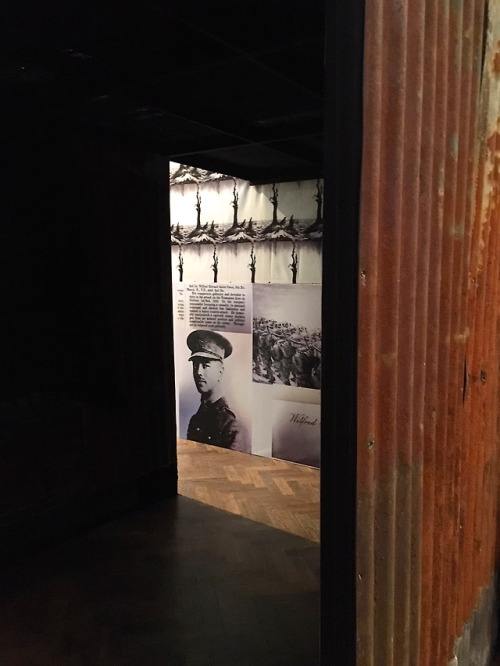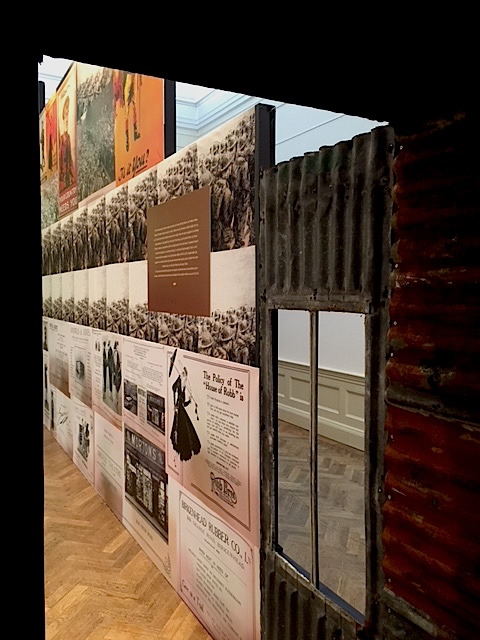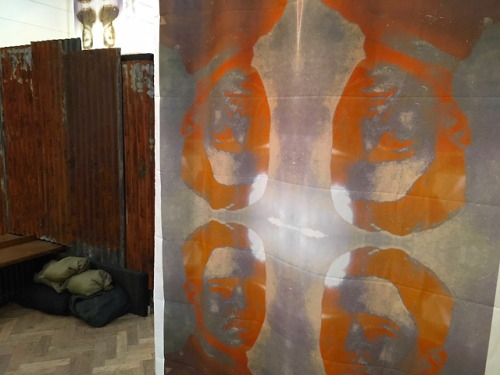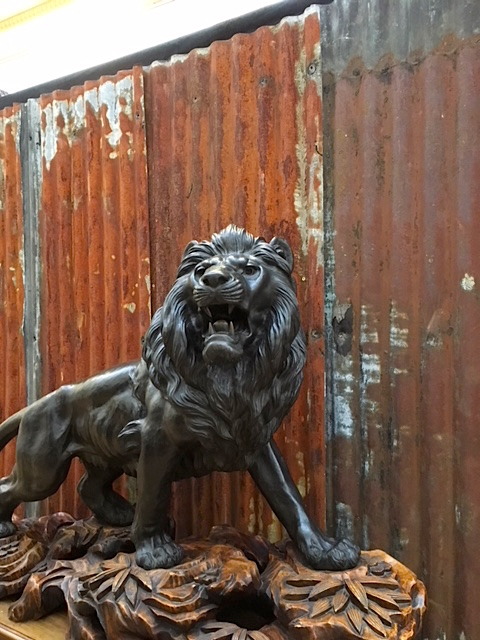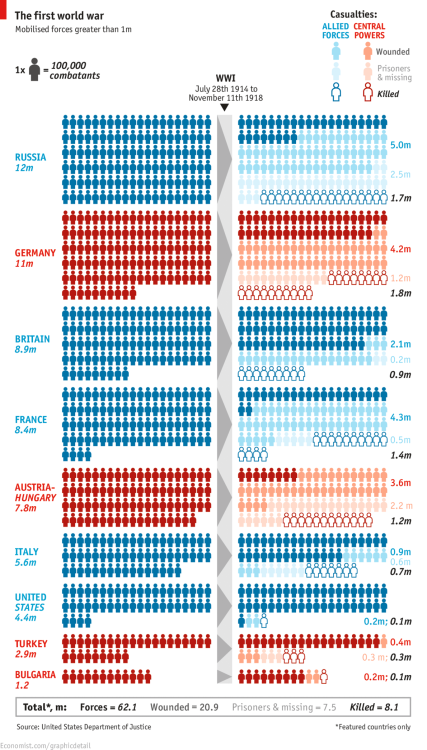#armistice day
Emmanuel Macron of France went to Arlington on Veterans Day to lay a wreath at the tomb of the Unknown Soldier.
Our own president couldn’t be bothered, because it was raining.
Merci bien, M Macron.
Post link
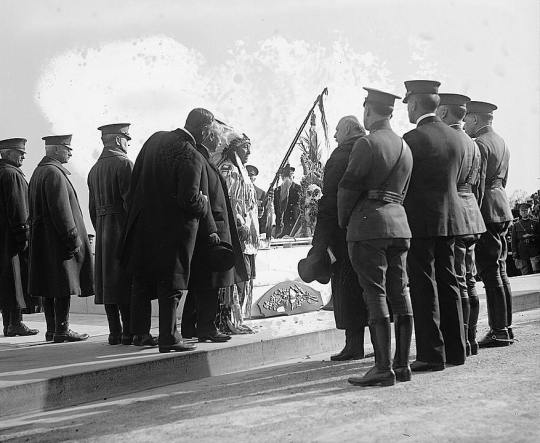
Chief Plenty Coups of the Crow Nation, pictured at the burial of the Unknown Soldier. The sarcophagus familiar to modern visitors was not completed until 1931.
November 11 1921, Arlington–On Armistice Day 1920, the United Kingdom and France had both buried unknown soldiers in places of honor–the former in Westminster Abbey, the latter under the Arc de Triomphe. In 1921, the United States followed suit. An unknown soldier was transported back across the Atlantic from France, where he laid in state in the Capitol rotunda for two days. On Armistice Day, the same day that the peace treaty with Germany would finally enter into effect, the casket was at the front of a procession down Pennsylvania Avenue as far as the White House, followed on foot by President Harding and General Pershing.
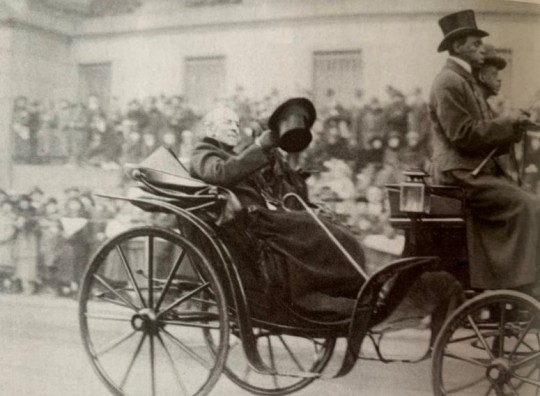
Wilson in a carriage at the end of the procession down Pennsylvania Avenue.
At the end of the procession were Woodrow and Edith Wilson in a rented carriage. The New York World wrote that the “pale face of the man who gave his health and strength to uphold the same ideals for which the Unknown Soldier died seemingly unleashed the pent-up emotions of the watchers.” Wilson did not continue on to Arlington, due to a combination of his health concerns preventing him from climbing the stairs at the amphitheater there, and Harding’s desire not to be upstaged by his predecessor.
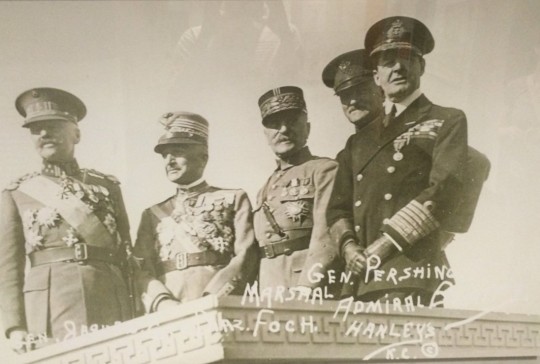
General Jacques of Belgium, General Diaz of Italy, Marshal Foch of France, General Pershing of the United States, and Admiral Beatty of the United Kingdom, pictures at the dedication of the Liberty Memorial in Kansas City on November 1.
At the service in Arlington, President Harding gave a brief speech. He was followed by General Jacques of Belgium, Admiral Beatty (who presented the Unknown Soldier with the Victoria Cross), Marshal Foch, and General Diaz. The four military men were at the end of a tour of the United States, along with General Pershing, which also included the groundbreaking of the Liberty Memorial (now the National World War I Memorial) in Kansas City on November 1. Also in attendance were a large number of foreign civilian notables, among them Arthur Balfour and French PM Briand, who were in Washington for the start of the Washington Naval Conference on arms limitation the next day.
The burial service ended with a brief statement by Chief Plenty Coups of the Crow Nation, the sounding of “Taps” on a bugle, and a twenty-one gun salute.
Sources include: Patricia O’Toole, The Moralist (includes image credit for the picture of Wilson).
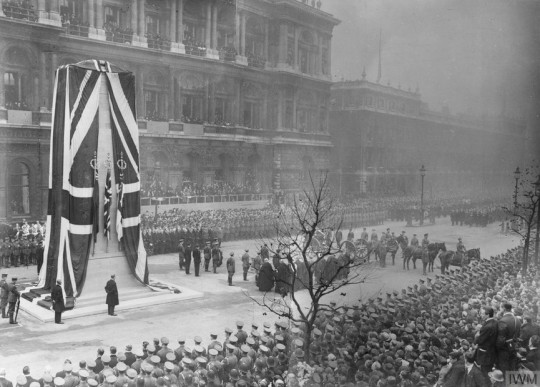
The Cenotaph, pictured between 10:30 and 11AM on November 11, 1920. The casket of the Unknown Warrior, drawn by a gun carriage, is partially obscured behind a tree.
November 11 1920, London–The official Victory Parade, celebrating the Allied victory in the war, was held in July 1919. It featured a cenotaph–an empty tomb–commemorating all the soldiers of the British Empire who had fallen overseas, their bodies buried there. The 1919 cenotaph was a temporary construction, but it was so popular (over a million people visiting the structure in the week after the parade) that there were soon calls for a permanent version.
The permanent Cenotaph, built on the same site in Whitehall as the temporary one, was built between May and November 1920, ahead of the unveiling on the second anniversary of the Armistice. As part of the ceremony, it was also decided to exhume an unidentified British soldier from France and bury him as the Unknown Warrior in Westminster Abbey (not in the Cenotaph itself, which was intentionally empty).
At 11 AM, exactly two years after the Armistice went into effect, King George V pulled a lever, revealing the Cenotaph from under the two large Union flags that had covered it. The crowd stood in silence for two minutes, the “Last Post” was sounded on bugle, and the King laid a wreath before the unveiled cenotaph before the procession continued to Westminster Abbey. There, the pallbearers, which included Marshals Haig and French and Admiral Beatty, bore the casket inside, where it was interred after a brief and solemn ceremony.
Until closed at midnight, crowds filed by both the Cenotaph and the tomb in Westminster Abbey. Within a week, well over a million had paid their respects, and the Cenotaph was partially buried in a pile of wreaths and flowers over ten feet high.
In response to Major John McCrae’s poem, In Flanders Field, Moina Bell Michael wrote the following excerpt:
That blood of heroes never dies,
But lends a lustre to the red
Of the flower that blooms above the dead
In Flanders’ Fields.
And now the torch and poppy red
Wear in honour of our dead
Fear not that ye have died for naught
We’ve learned the lesson that ye taught
In Flanders’ Fields.
We didn’t learn the lesson, but Moina began the custom of wearing a red poppy to remember ‘the blood of heroes’.
Starting as an American tradition, it soon became adopted in Great Britain. Anyone in the limelight not wearing a poppy pin has caused a scandal (even recently in the news).
Read more about the history and dos and don'ts of poppy etiquette HERE.
Post link
ICYMI, our new partnership with Manual Cinema in honor of 100 years since the end of World War I is here! Three World War I Poems brings a selection of poems to life with innovative paper puppetry and animation work, each vignette sharing a different experience of “the war to end all wars” from a soldier’s point of view.
[video: Three interwoven vignettes of interpretations of “The Owl” by Edward Thomas, “Dulce et Decorum Est” by Wilfred Owen, and “In Flanders Fields” by John McCrae.]
Click on the image to see the detail in a zoomable context.
Detail from Hector Broughr Back to Troy, Anonymoua, 180-200
Post link
‘Men Marched Asleep’ (2018)
Williamson Museum and Art Gallery, Merseyside, CH43 4UE
Nov - Dec 2018
Heritage Lottery Funded
The title of the installation takes its inspiration from the fifth line of the Wilfred Owen poem: Dulce et Decorum Est
…a poem which provides a deeply evocative description of men exhausted by battle but continuing on. It’s a journey-narrative saturated by time-and-toil, regimental history and personal loss during the Great War. This sense of movement is conveyed in parallel by the installation itself as a series of historical objects, personal photographs and artworks created by the local community transport the visitor through an immersive and evocative environment peppered with lines taken from the poetry of Owen alongside a life-size trench.
Serving & former soldiers contributed to a workshop programme alongside members of The Spider Project, a creative arts and well-being recovery community programme.
Post link






